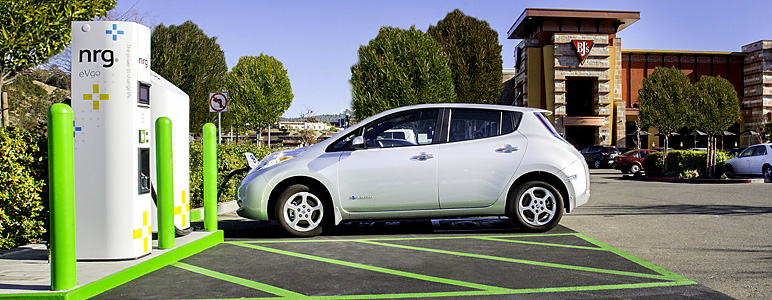


The California Energy Commission recently funded a series of zero-emission vehicle (ZEV) readiness projects throughout the state. They awarded eight proposals, including projects in the San Diego region and the San Joaquin Valley that, among other things, will work to implement best practices previously made in assessments of each regions’ plug-in electric vehicle (PEV) readiness.
The readiness of regions around the state (and nation) to support ZEVs through ordinances and infrastructure and the wider consumer adoption of ZEVs are kind of a chicken-and-egg situation. You really can’t have one without the other.
What is ZEV readiness?
ZEV readiness refers to a region’s or community’s ability to accommodate and support a growing number of ZEV vehicles. This generally includes addressing a variety of factors that are typically beyond the control of a prospective ZEV driver: building codes, parking regulations, refueling station siting and installation (including permitting and inspection processes) and public awareness of the technology. With regard to plug-in electric vehicles, this also includes charging installation processes at multi-unit dwellings and workplaces.
In California, such projects are funded under the Energy Commission’s Alternative and Renewable Fuel & Vehicle Technology Program. In 2012, the program funded ten projects throughout the state to develop PEV readiness plans identifying and proposing action to remove barriers to greater PEV adoption and infrastructure deployment. All PEV readiness plans were completed in 2014.
In September 2014, the Energy Commission released a grant solicitation for ZEV readiness projects to implement the recommendations of the existing PEV readiness plans. This funding provides an opportunity for recommendations from the readiness plans to come into fruition — an important step in overall PEV readiness. It is a strong signal of the state’s overall commitment to accelerating ZEV adoption and infrastructure deployment in order to reach the governor’s goal of putting 1.5 million ZEVs on the state’s roadways by 2025 and providing the refueling opportunities to support them.
San Diego & San Joaquin Valley
CSE will play a role in the ZEV readiness best practice implementation projects in the San Diego region and the San Joaquin Valley. Both projects will focus on the key areas of EV charger installation processes and siting, municipal permitting and inspection, and increasing PEV awareness. Though these two projects cover similar areas, the activities will differ greatly in response to the each region’s needs.
In the San Diego region, already a strong PEV market, efforts will focus more on regional coordination of PEV activities by local governments in order to better accommodate PEVs as they move about the county. The goal is to improve significantly the availability of charging opportunities, facilitate charger installation processes and assist in siting charging equipment, particularly in multi-unit dwellings and areas of high-volume vehicle parking turnover.
In the San Joaquin Valley, where there is a small but growing number of PEVs, the implementation work will focus on empowering local governments to become PEV ready through educating their permitting and building officials, training installation contractors, and establishing permitting and inspection standards that expedite charger installations.
These two multiyear projects, along with the funded projects in other state regions, are expected to positively impact California’s electric vehicle market.
We salute the Energy Commission for continuing funding for the implementation of PEV readiness projects in order to meet California’s aggressive greenhouse gas reduction goals, increase alternative fuel vehicle adoption and achieve the 1.5 million ZEVs goal.

